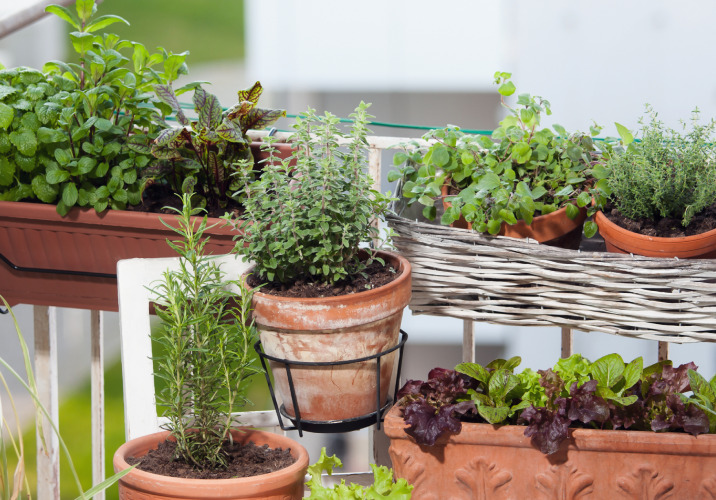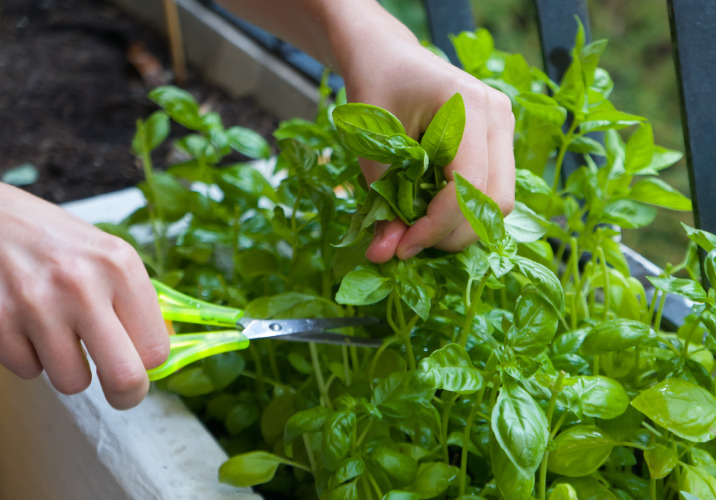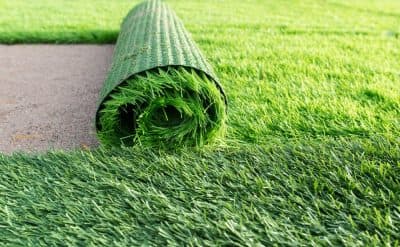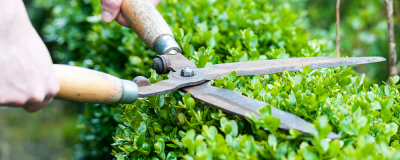
Find a local gardener
- Inspiration /
- Outdoor projects /
- Gardening & landscaping /
- Grow your own...
Grow your own vegetable garden
How to grow fresh vegetables and herbs in your own backyard
More and more people are growing their own vegetables at home as an alternative to buying from the supermarket. There are many reasons for this, not least the fact that it can be quite a considerable saving from your weekly grocery bill. In addition to this, if you grow your own, you’ll know for sure that they haven’t been chemically treated and can harvest them at the peak of their freshness for that extra special taste. You don’t even need a large garden or plots of soil, as there is a large number of vegetables which can be grown in pots.
Choosing which vegetables to grow
Of course, the first consideration when growing your own vegetables is your personal taste, so you’ll want to pick some of your favourite greens. Another thing to consider is the requirements of each plant; most need different amounts of sunlight and water, plus their own pot, but some veg can be grown together, like tomatoes and cucumber.
Potting your vegetables
Any type of pot is usually adequate for growing vegetables, even old buckets or cans, but you’ll generally want to use a clay pot with holes in the bottom so surplus water can drain out. These pots can be sealed to prevent too much water escaping. The colour of the pot is important too; for vegetables that need a lot of heat, you should use a dark pot and for those that need less heat, a lighter coloured pot is preferable. The size of the pot you use will obviously depend on the size of the veg you are growing, with larger greens such as tomatoes and squash needing large pots. The final thing to consider before planting your seeds is the type of soil that the plant will need in order to grow. Usually, this will be indicated on the seed packet, but most pots should be filled with a sterile, pH adjusted soil with fertiliser and water retention granules.

Growing your vegetables
Once you’ve selected and planted your vegetables, it’s time to let them grow. They obviously need sunlight and water, but care and attention are the most vital ingredients. Regularly watering your plants will keep them from becoming dehydrated and give them the best chance to flourish.
How to grow cucumbers
Cucumbers are classified as fruits as they take well to warm weather and come in a wide variety of types. Nonetheless, cucumbers can be a staple food item and are a great plant to grow in your first vegetable garden with numerous health benefits:
Plant in early spring
Plant cucumbers early in September as a seedling or newly planted seeds.
Pick a spot with lots of nutrients and organic matter
Cucumbers need lots of water while growing so plant seeds in moist, loose soil that’s well-drained.
Give them space
Distance your cucumbers half – a metre apart to give them space to grow.
How to grow potatoes
Potatoes are a versatile vegetable with a wide range of uses. While potatoes can grow from an existing potato, planting seeds from a local garden centre will give you a better yield of crops.
Timing is key
Plant potatoes between late Feb- September and you should see growth within a week to ten days. Potatoes will mature in four to five months. Potatoes should be planted at least 10cm deep and at least 50cm apart from each other.
Additions will help
Loosen up your garden’s soil with additives like manure that provides the needed phosphorus for potatoes.
Keep your crops covered
During the early growth phase, keep potatoes covered with soil and mulch because sunlight can render potatoes inedible. Keep potatoes moderately watered but overwatering can cause rotting.
Harvest when vines die
The ideal time to harvest your plants should be when the lower half of the plan begins wilting, approximately a month after the flowering has begun. Store your harvested potatoes away from the full sun and ensure they’re completely dried before storing them away.
Contact local gardeners
How to grow garlic
Garlic is easy to grow all year round and while it’s a tiny addition to your recipes, a small clove makes a big difference in flavour and seasoning.
Plant in full sun
Choose an area of your garden that receives full sun all day. Garlic doesn’t use seeds and a clove can be planted in a pot or a patch as it won’t harm plants nearby.
Garlic blooms in March
The middle of March when the days are shorter and nights are cooler, make it an ideal time to plant garlic. Plant a garlic clove two to three centimetres under the soil with the narrow end upward facing. Separate your cloves about a fist distance apart in rows that are about 35cms wide. Water garlic generously about twice a week.
Harvest garlic cloves when the leaves die
Simply grab the stalk of the plant and pull the bulb from the soil. Simply brush the dirt off rather than washing a garlic clove.

Growing herbs
Many herbs are seasonal and will only survive until the growing season is over. Basil is a fast-growing herb, and its growth is encouraged by pruning. Try putting this in a window during the summer months. Remove flowers from cooler-climate herbs like coriander and dill, and they’ll last much, much longer. The pruning helps to keep them compact and will help keep the herb yields higher.
A more inexperienced gardener might want to go for herbs like rosemary, sage and thyme. The less attention paid to them, the stronger they’ll be. One thing to watch out for when you start to plant – lookout for pests. They can quickly become a problem. In order to combat insects, be sure to use natural products or solutions to get rid of them once and for all.
How much will your job cost?
The Oneflare Cost Guide Centre is your one-stop shop to help you set your budget; from smaller tasks to larger projects.



